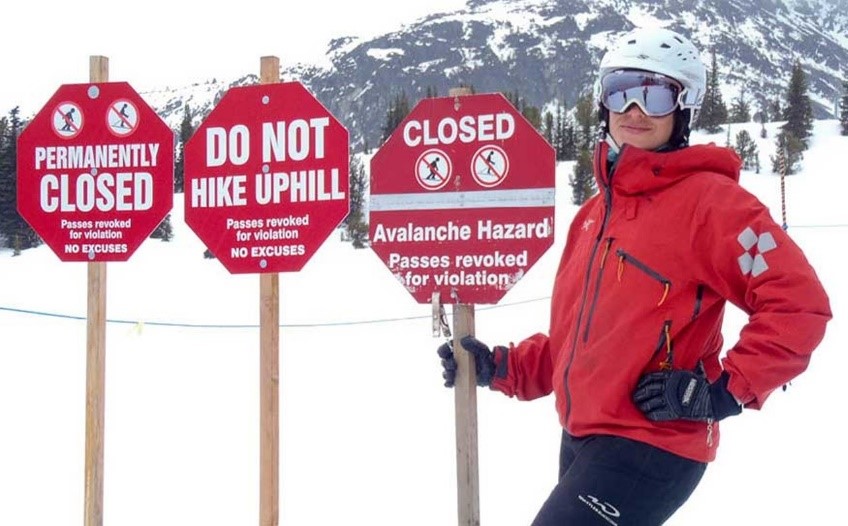VISITORS TO CANADA TOP FAQ’S
CAN I BUY COVERAGE IF I'M ALREADY IN CANADA?
Yes, if you know of no reason for which you may seek medical attention.
You should note that for Insurance purchased within 60 days after arrival in Canada: There is **no coverage for any sickness** arising in, occurring in or symptomatic during the **first 48 hours of the effective date of the Policy**. This includes any related expenses incurred after the first 48 hours from the effective date of the Policy.
For Insurance **purchased 61 days or more after arrival** in Canada: There is no coverage for any sickness arising in, occurring in or symptomatic **during the first seven days** of the effective date of the Policy. This includes any related expenses incurred after the first seven days from the effective date of the Policy.
The waiting period is not applicable when insurance is purchased prior to arrival in Canada
DO YOU COVER BACKCOUNTRY SKIING AND RIDING?
Yes, we do! All you need to do is customize your policy when quoting to include any adventure sports. If you want to include multiple sports, you’ll only be charged for the highest-risk activity. We do not cover Out of bounds, however, which is defined by any mountain area that: a) Has been closed off to public access; or, b) Has been identified as “out-of-bounds” and/or can typically only be accessed by crossing a fenced, gated or roped-off area that has been marked as off-limits according to recommendations of safety authorities in the area.
HOW MUCH COVERAGE CAN I BUY?
You can purchase increments of $25,000 up to $300,000 and choose your deductible from $0.00 to $10,000 which determines your discount level ranging from a 15% surcharge to a 35% discount.
IS IT BETTER TO BUY FOR THE ENTIRE LENGTH OF MY TRIP?
Yes. If you become injured or ill in the final days of your stay, the coverage does not extend beyond the expiry date and cannot be extended if you've already made a claim, leaving you with potentially high medical costs. The other important saving is the "Sports Packages" are charged each time you purchase a new policy. If you plan on being in Canada for 6 months, for instance, you're much better off buying for the entire length of your stay and getting a refund if you change your plans.
CAN I EXTEND MY COVERAGE?
You can extend your period of coverage before your Policy expires by calling your agent or TuGo during general business hours at 1-855-929-8846 or email at info@tugo.com and must meet the following conditions;
You have not submitted a claim and have no intent to submit a claim. Your period of coverage has not already expired. Extensions are not available if the total trip length exceeds two years from the effective date of the original Policy. You have not seen a physician or other registered medical practitioner since your departure date or the effective date of the Policy. You are in good health and you do not know of any reason to seek medical attention. If these conditions haven’t been met, an extension may be authorized at the discretion of TuGo. If an extension has been authorized, there would be no coverage for subsequent claims related directly or indirectly to the condition(s) or symptom(s) for which a claim has been or will be submitted or for which medical treatment was received or required prior to the effective date of the extension.
CAN I CANCEL MY POLICY?
Yes, plans can be cancelled before or on the effective date found on your policy declaration page. Any cancellations after the effective date may result in an administration fee of $25. To cancel a policy or for more information, please contact TuGo Customer Service at 1-855-929-8846 or email at info@tugo.com
WHAT IF bc is not my destination. Can I buy for other provinces?
Yes, the quoting system allows you to quote any province in Canada as TuGo is Nationwide, not just in BC. This site was originally built for Whistler Travel Insurance, then expanded to BC Travel Insurance and most recently Canada Travel Insurance.
AM I COVERED OUTSIDE OF BC, WHAT ABOUT VISITING THE USA/MEXICO?
Yes, when buying, you’ll need to select the province in which you’ll be spending the most amount of time as your primary destination. If you plan a quick trip to the USA or Mexico while on an extended stay in Canada, as long as the majority of your time spent is in the province you selected, you will be covered while travelling abroad. An example of this would be if you’re in BC for 6 months and you decide to take a week vacation to Mexico, your policy will cover you for your trip. Any direct question can be answered by calling TuGo directly at 1-855-929-8846.
HOW IS BC TRAVEL INSURANCE AFFILIATED WITH TUGO
BC Travel Insurance is a licensed Insurance Broker Operating under Ocean Sun Financial and TuGo is the Insurance provider which takes care of the customer service and claims. All the Insurance is underwritten by Lloyds of London.
WHAT HAPPENS AT THE TIME OF CLAIM?
You will need to contact TuGo immediately in any emergency situation from anywhere From Canada and USA: 1-800-663-0399 From Mexico: 001-800-514-9976 / 01-800-681-8070 Worldwide (collect): 604-278-4108
WHAT IS COVERED IN MY POLICY
The company will pay the actual, reasonable and customary medical and related expenses up to the coverage limits for acute, sudden and unexpected emergency sickness or accidents, incurred while you are travelling outside of your country of permanent residence. Eligible medical and related expenses are described below.
Hospital care and treatment for injuries and illnesses including COVID-19*, Doctor’s services, ambulance services, x-rays and other diagnostic laboratory procedures, prescription drugs, essential medical supplies such as crutches, fracture treatment benefits, other professional medical services like physio, etc. to relieve an acute emergency, emergency dental service, maternity/prenatal care, delivery and/or complications, hospital allowance for incidental charges like TV rental, etc. emergency air transportation (must be pre-approved and arranged by us), airfare to return home for treatment, return of travelling companion, return of dependent children, family transportation, out-of-pocket expenses for accommodation, meals etc. return of vehicle, 24-hour accident insurance, up to $25,000, up to 5 follow-visits within 14 days of the initial emergency medical treatment, travel worldwide, as long as the majority of your trip is in Canada. (Up to policy Limits)
HOW MUCH TIME AND FOLLOW-UP VISITS ARE ALLOWED?
Three follow-up visits within the 14 days after the initial emergency medical treatment, provided the follow-up visits are required as a direct result of the initial emergency.
WHAT ABOUT FRACTURE TREATMENT
Following the initial emergency treatment and any covered follow-up visits, the company will pay up to a maximum of $1,000 for the following treatments related to fractures:
X-ray examinations following the initial casting until the cast is permanently removed; and, Re-examination physician visits following a casting until the cast is permanently removed; and, Re-casting and new cast, if medically necessary; and, Cast removal; and Physiotherapy treatment When this benefit is used for physiotherapy treatment, there is no further coverage for physiotherapy treatment under the Other Professional Medical Services Benefit. Eligible expenses must be incurred during the same trip and prior to your return to your country of permanent residence.
WHAT CIRCUMSTANCES OFFER AN AUTOMATIC EXTENSION OF COVERAGE?
At the time the period of coverage ends, coverage for you, your insured travelling companion and/or your insured dependent children or grandchildren will be automatically extended at no additional premium:
For seven days in the event, your common carrier is delayed due to circumstances beyond your control, preventing you from returning to your home province. For the remaining period of your hospital confinement plus seven days after release for you to recover and/or travel home; or, For seven days for you to recover and/or travel home if a physician advises you that your sickness or injury renders you unable to travel on your scheduled return date but you are not hospitalized if written documentation is provided by the attending physician to substantiate your inability to travel home as originally scheduled.
ARE THERE ANY other EXCLUSIONS?
Pre-existing conditions that are not stable in the 120 days before the effective date or the arrival date in Canada, whichever occurs later, for insureds who are 59 years and under on the application date.
Pre-existing conditions that are not stable in the 180 days before the effective date or the arrival date in Canada, whichever occurs later, for insureds who are 60 to 69 years on the application date.
Any pre-existing conditions for insureds who are 70 years and over on the application date. Conditions or any related conditions for which, prior to arrival date in Canada, testing or investigation took place, was scheduled to take place or was recommended (not including tests for a routine check-up or routine monitoring for a medical condition), and for which results had not yet been received at the time of arrival in Canada. This includes tests or investigations that were recommended or scheduled prior to the arrival date in Canada but had not yet taken place. Tests and investigation except when performed at the time of the initial emergency sickness or injury.
Any medical treatment other than continuous treatment as specified in the Dental Services Benefit, which is a continuation of or subsequent to an emergency sickness or accident during the same trip, including its recurrence or any complications related directly or indirectly thereto, unless you are declared by an attending physician medically unfit to return to your country of permanent residence, or the country you were travelling or residing in prior to arriving in Canada.
WHICH SPORTS PACKAGES ARE AVAILABLE



